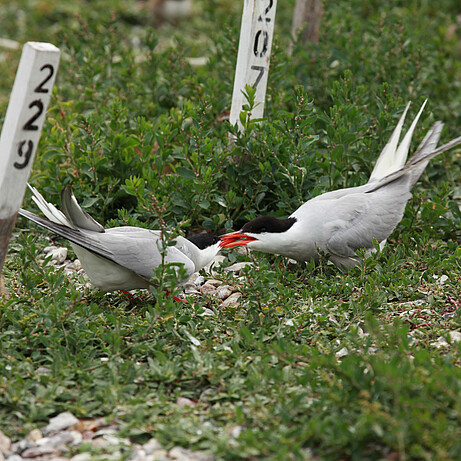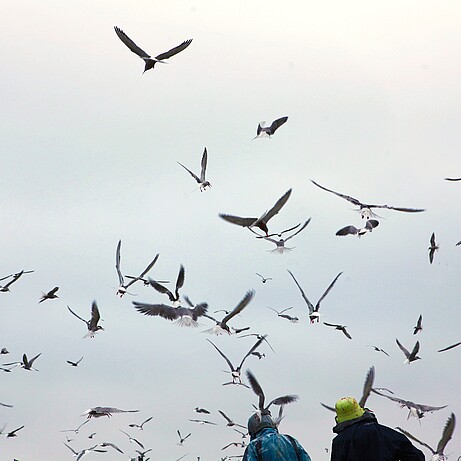



Personality and sociality in a colony-breeding seabird
Consistent individual differences in behaviour, for example along a bold-shy spectrum, have been observed in a range of animal species. Although we have long thought the Banter See common terns also show consistent personality differences, we have only recently embarked upon a pilot study. And indeed, when faced with a novel stimulus placed at the nest, adult breeders showed a fairly consistent latency to return, at least within the breeding season (Castano et al. 2025). In the upcoming breeding seasons, we therefore plan to expand on our behavioural assays, and to repeatedly test individuals both within and across seasons. In a next step, we will then be linking personality variation to other traits, such as migratory behaviour, physiology and pollutionlevels. Additionally, we will establish tests to assess the exploratory phenotypes of chicks, and how these may be shaped by the social environment they are reared in, as well as by traits such as sex, age, hatching order and parental personality. When these chicks recruit as breeders themselves, their early life exploratory behaviour will be linked to their personality and behaviour as adults.
Potentially closely related to individual personality variation is the recent observation that the terns of the Banter See show consistent individual differences in the active number of neighbours they have while breeding. Moreover, we could show that the birds experience age-specific declines in this social trait, as well as selective disappearance of individuals with many neighbours (Moiron & Bouwhuis 2024). By building a camera system above at least some of the islands to provide us with continuous video data on the behaviour of birds at the colony, and developing AI and computer vision methodology, we now plan to study social interactions between birds at the colony throughout the breeding season and in high detail. We will first focus on neighbour interactions, and how these change with age and neighbour familiarity, but also hope to gain further insights in the processes shaping spatial nesting patterns (Bouwhuis et al. 2020) in general.
Finally, the long-term study of pedigreed common terns at the Banter See provides a unique opportunity to investigate the feedback mechanisms between ecological changes and evolutionary responses (“eco-evolutionary dynamics”). As part of this investigation, and linked with the spatial nesting patterns mentioned above, we are currently testing for density- and frequency-dependent selection, thereby directly quantifying the link between natural selection and population dynamics. We are also testing for the impact of multiple abiotic factors on the population’s ability to adapt to rapid environmental change and the demographic costs of those adaptations. Particular emphasis is placed on the nature of the selective processes underlying evolutionary responses, such as distinguishing between a sustained decrease in food availability and a sudden outbreak of avian influenza.
Publications
Castano MV, García GÓ, Kürten N, Bouwhuis S (2025) Individual behavioral responses to novel stimuli in breeding common terns (Sterna hirundo). Ethology 131: 55-63
Moirón M, Bouwhuis S (2024) Age-dependent shaping of the social environment in a long-lived seabird: a quantitative genetic approach. Philosophical Transactions of the Royal Society B Biological Sciences 379: 20220465
Bouwhuis S, Ballani F, Bourgeois M, Stoyan D (2020) Colony size affects breeding density, but not spatial distribution type, in a seabird. Behavioral Ecology 31: 1113-1119

